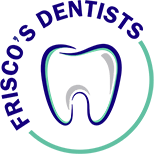Dental Tips to Keep Your Child’s Smile Bright
As parents, we hope to teach our children healthy and sustainable habits that last a lifetime. One of the most important practices to start at a young age is a healthy dental hygiene routine, which can help fight off cavities, periodontal disease, and tooth decay. Here are some ways you can begin to show your child the importance of keeping their smile clean, healthy, and bright.
Introducing a Dental Hygiene Routine
The key to keep your child’s smile healthy is by introducing daily dental hygiene into their routine. Use these tips to keep your little one’s smile shining bright.
- Use a gold star program. Every time your child brushes their teeth or flosses, give them a star!
- Lead by example. Children often learn their behaviors from their parents, so teach them to take care of their teeth by brushing and flossing with them.
- Pick up dental-themed books or videos. Include some fun tooth-friendly educational books into your child’s collection to inform them about dental health.
- Plan a day out after the dentist. Whether it’s a trip to the park or a movie day, this can help make going to the dentist less scary.
Preventing Tooth Decay and Cavities
To keep your little one’s smile bright and cavity-free, they will need to keep up with a proper dental hygiene routine. This includes making sure they brush their teeth after each meal, floss daily, use mouthwash, and regularly seeing the dentist.
Many of our patients only visit the dentist when something hurts or feels wrong — but one of the most vital parts of your dental health care is going to the dentist regularly. This includes receiving routine x-rays and regular cleanings.
Signs Your Child Has a Cavity
Tooth decay happens in different stages, and it also appears differently for each child. Here are some common signs that your child may be developing a cavity:
- Pain or discomfort when chewing.
- Sensitivity to hold cold foods or sweets.
- Light brown or black marks on the tooth.
- White spots on the enamel of the teeth.
If your child displays any of these symptoms, they should visit the dentist as soon as possible. Their dentist will examine your child’s mouth, take X-rays, and will recommend the right treatment — typically a filling or root canal, depending on the severity of the decay.
Choosing Teeth-Friendly Foods
Your child’s diet plays a vital role in making sure they grow up healthy, which means the right foods can support strong and healthy teeth.
Foods To Choose
Foods that are rich in fiber, vitamin D, vitamin C, and other minerals can help strengthen our teeth. Introducing these nutrient-dense foods in your child’s diet can help fight off bacteria, clean their teeth, and reduce their risks of tooth and gum decay:
- Dairy products like cheeses, yogurts, and milk.
- Crunch vegetables like celery, carrots, cucumbers, and broccoli.
- Fatty fish such as salmon.
- Fruits such as apples and blackberries.
Foods To Avoid
The wrong foods can also lead to tooth decay and can cause a multitude of dental issues down the line. Here are some foods to consider limiting in your child’s diet:
- Sugary drinks, snacks, and desserts.
- White bread.
- Potato chips.
- Citric fruits.
- Sour candies,
- Dried fruits.
Using the Right Dental Products
From toothbrushes to mouthwash, the dental products we use for our smile can help prevent cavities, gum disease, and tooth decay — and the same goes for our children. Be sure to use mouthwashes with an ADA seal of approval, and consider using a Waterpik to help your child floss easily.
General Tips for Choosing a Toothbrush for Your Child
The best defense against your child having to miss school to get their cavity filled? Brushing their teeth! However, with so many options on the market, it can be tricky to determine what type of toothbrush is best for your mini-me. Here are some tips to help make your choice easier:
- Choose a toothbrush that has a smaller head.
- Choose a toothbrush that has soft bristles.
- Choose a toothbrush with an ADA seal of approval.
- Let your child decide between an electric or manual brush.
The Importance of Brushing for Children
Having the proper toothbrush is not always enough to keep your child’s smile clean — they’ll need to brush correctly, too. These simple tips can help ensure your child is brushing properly:
- Hold the toothbrush at a 45-degree angle.
- Don’t forget to brush the front, top, and behind of bottom front teeth.
- Use short strokes and spend time cleaning each area of the mouth.
- Sing ‘Happy Birthday’ while brushing to ensure they are brushing long enough.
Additionally, there are multiple ways you can help your child brush their teeth, including:
- Laying the child on their back.
- Sitting them on your lap.
- Stand behind them and brush with them.


.2004220757550.png)